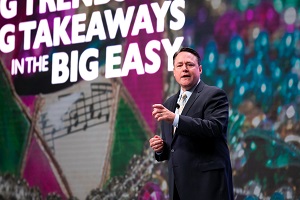The difference between power, force
 I recently wrote about how setting high expectations is good for your team – doing so essentially sets the stage for self-fulfilling prophecies. But while you can communicate what you want your employees to achieve – and what you think they're capable of – how do you motivate them to take action?
I recently wrote about how setting high expectations is good for your team – doing so essentially sets the stage for self-fulfilling prophecies. But while you can communicate what you want your employees to achieve – and what you think they're capable of – how do you motivate them to take action?
We each have our own leadership style, but what I've found in my career is that empowerment and providing employees with the confidence, skills, and resources to work autonomously is much more effective than any component of micromanagement or constant directives.
As we think about how we can empower our teammates, executive coach Ed Batista has detailed the difference between power and force, which I think is the underlying distinction in motivating your team.
Here are the differences:
|
Forceful behavior |
Powerful behavior |
|
Speaking loudly |
Speaking softly |
|
Speaking rapidly |
Speaking slowly |
|
Interrupting |
Remaining silent |
|
Giving an order |
Asking a question |
|
Harsh language |
Nuanced language |
|
Staring |
Looking away |
|
Emotional expressiveness |
Emotion regulation |
What comes to mind when you read through these lists? For me, I immediately see characteristics of servant leadership in the powerful behaviors. Remaining silent, even when you want to jump in, allows you to focus on listening to your employee's concerns. Asking a question allows you to better understand what they're saying. Regulating your emotions and being intentional with your word choice helps you convey empathy and your thoughts without coming across as condescending or angry.
This all comes down to putting your employees' needs ahead of your own – for the good of the company. It can be difficult to put ambition aside for someone else. As Batista notes, people in leadership positions are often high in power motivation.
Now, Batista's message doesn't mean leaders shouldn't be decisive when it comes to decision making. Rather, it reinforces the type of environment that you should create in your office: One where employees are encouraged to be innovative and solution-oriented, where there is open dialogue as you explore complex problems and people can share their ideas. But, for leaders to be effective, you must communicate clearly why you think the final decision puts you on the best path forward and how each employee's individual contributions get you there.
All of this combined achieves buy-in from your employees and a sense of ownership as you all work toward shared goals. It's how you influence your team, knowing how to balance forceful characteristics like ambition, focus, and confidence with powerful ones like empathy and conflict resolution. This is how you effectively motivate your team.
Follow me on Twitter (@BDanBerger)
About the Author
B. Dan Berger, President and CEO, NAFCU
 B. Dan Berger first joined NAFCU in 2006 and helped turn the association into the premiere advocate for the credit union industry.
B. Dan Berger first joined NAFCU in 2006 and helped turn the association into the premiere advocate for the credit union industry.
